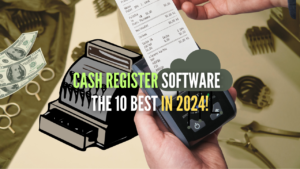
Perhaps you’ve already come across the term “growth hacking,” or maybe it’s still new to you. In either case, it’s true that the name can be intimidating and might even raise a few concerns. However, rest assured, there is absolutely nothing illegal about it!
Growth hacking is a marketing method imported from the United States and has been known to marketing professionals since the early 2010s. Its name, which translates to “growth hacking” in French, actually refers, through the term “hack,” to the development and implementation of innovative marketing techniques aimed at rapidly growing a business.
If you’re at the early stages of growing your business, it’s highly likely that the idea of delving into growth hacking is becoming increasingly appealing to you. If that’s the case, then in our article, you’ll discover everything you need to know about growth hacking, the skills required to embark on it, and the various steps to quickly expand your business.
We’ll delve into the well-known AARRR method (acquisition, activation, retention, referral, revenue) and provide advice on five essential tools to get you started.
What is growth hacking?
Growth hacking, which could be literally translated into French as “piratage de croissance” and is also known as growth marketing, is a growth strategy encompassing a set of marketing techniques aimed at accelerating a company’s development. Invented by Sean Ellis, an American entrepreneur, investor, and founder of growthhackers.com, in 2010, growth hacking, under Ellis’s guidance, contributed to the growth of companies like Airbnb, Eventbrite, and Dropbox, among others.
Most commonly employed by startups, growth hacking enables the achievement of remarkable growth results through unconventional, creative, and sometimes “aggressive” marketing methods, even without a large budget or significant resources.
What is the training and role of a growth hacker?
The profile of a growth hacker is particularly intriguing because it’s ultimately quite hybrid. While having a strong foundation in marketing, a growth hacker doesn’t necessarily need to be a professional marketer. What truly defines a good growth hacker is their knowledge of entrepreneurship and experience in the startup world. While there isn’t a formal training path to become a growth hacker, here is a range of skills that one should possess to excel in this role: social media marketing, SEO, email marketing, overall marketing, data analysis, and many others.
Of course, there’s no need to be an expert in each of these skills, but rather to understand them and know when to collaborate with the right individuals when needed.
Here are the typical tasks often performed by a growth hacker:
- Harness the potential of a wide array of marketing tools.
- Regularly experiment with new strategies and actions.
- Analyze, optimize, and reduce conversion costs.
- Develop a growth strategy based on the AAARRR method (which we will discuss later).
- Enhance customer acquisition processes to optimize conversion rates.
- Improve the user experience to enhance various processes within your company.
How to do growth hacking?
If you have a sufficient budget to afford the services of a growth hacker, we highly encourage you to get started. However, if you intend to take on the task of growth hacking for your business yourself, then you will need to become familiar with the renowned conversion funnel AARRR (acquisition, activation, retention, referral, revenue).
Acquisition
This is the very first step in a growth hacker’s work: attracting as many prospects as possible and directing them to a website, service, or online store. In any case, it’s essential to have previously created a clear and functional landing page to convert acquired visitors into potential customers. Traffic acquisition can be achieved through various channels, depending on the strategy identified as most relevant for the brand in question. This may involve acquisition through social media, email marketing, advertising, SEO, and SEA.
Activation
When the first visitors land on your landing page, you’ll need to convert them into customers. That’s why your landing page must be meticulously designed to naturally guide visitors into taking the desired actions (subscribe to your newsletter, pre-order your products, follow your social media, etc.). The landing page should inspire trust and, most importantly, offer a clear value proposition.
Retention
The retention phase is crucial for ensuring the growth and longevity of a business. Website or online store visitors must now become and remain active. Recurrence is the key to success. Therefore, it’s time to build customer loyalty. To do this, many effective retention strategies can be implemented, including regular email outreach with added value (tips, promotions, exclusive sales access, etc.), discounts, loyalty programs, exclusive events, and more.
Referral
This penultimate stage is vital for ensuring the growth and sustainability of a business. The growth hacker’s task here is to encourage active visitors and customers to become brand “ambassadors.” To initiate and maintain this virality, various actions need to be put in place. This may involve creating a referral program, organizing contests on social media, or encouraging customers to leave Google reviews.
Revenue Finally, and this is the core of growth hacking: it’s time to transform traffic into revenue! All the work done by the growth hacker in the previous four stages serves this ultimate purpose.
5 Essential Growth Hacking Tools to Help Manage Your Online Store
You now have (almost) no secrets left when it comes to growth hacking. If you feel like a growth hacker at heart and believe you can dive in today, here are some indispensable tools for managing and growing your online store.
Google Analytics for the Acquisition Phase

Google Analytics is the most widely used audience analysis tool in the world, and for good reason. It’s easy to master, accessible to everyone, and completely free. With Google Analytics, you’ll learn about your target audience and their behavior through a multitude of metrics. You’ll obtain information about user origins (social networks, commercial links, banner ads, etc.), as well as their demographic data (age, gender, location, interests, etc.) and how they navigate your online store (entry and exit points, time spent). This information will allow you to adapt your marketing and business strategies based on your performance.
PageFly for the Activation Phase
We previously discussed the importance of creating a functional landing page. This step is extremely important. A landing page is a destination page where internet users land after clicking on a link. This page’s mission is to present your value proposition to visitors and encourage them to convert. Therefore, you’ll need an effective tool to create a clear and high-conversion landing page. PageFly is an application that allows you to create a high-quality, high-conversion landing page. The application is available for free on the Shopify App Store, but if you want access to more options as your business grows, you can opt for Silver ($19 per month), Gold ($39 per month), and Platinum ($99 per month) subscriptions.
Klaviyo for the Retention
Phase Email marketing and SMS marketing are two excellent strategies to implement for customer retention. Klaviyo is a marketing platform in the Shopify ecosystem that makes it easy to send personalized emails and SMS. The advantage of Klaviyo is that the platform is free for up to 250 email contacts and 50 SMS contacts. As your list grows, you can switch to paid options, such as $20 per month for 500 email contacts and $5 per month for 150 SMS contacts.
Stamped.io for the Referral Phase
During the referral phase, a growth hacker will likely focus on obtaining product reviews. With the Stamped.io application, you can collect and showcase 7 types of User Generated Content (UGC): product reviews, photo and video reviews, Instagram Shoppable Gallery, community Q&A, Checkout Reviews, Net Promoter Score Survey, and the ability to import reviews from Facebook. The application offers a 7-day free trial, and afterward, you can choose from Basic ($19 per month), Premium ($39 per month), Business ($99 per month), and Professional ($249 per month) pricing depending on your needs.
Zapier for the Revenue Phase
Zapier is undoubtedly one of the marketing industry’s star tools. An essential for task automation, Zapier allows you to connect different applications together, serving as an intermediary for APIs. Using what’s called a “zap,” you can automate everyday tasks that are essential for your business’s development but are also time-consuming. With Zapier, you can simplify certain processes and free up time for more important tasks. For example, you can set up a zap to automatically download all email attachments you receive to your Dropbox. Zapier is free if the basic options suffice for managing your various tasks. A 14-day trial allows you to test premium options, available starting at $20 per month.
As we’ve seen throughout this article, growth hacking is an iterative marketing process that enables startups and growing businesses to develop quickly and effectively. However, like any marketing strategy, there’s no one-size-fits-all formula: with growth hacking, you should not be afraid to try, experiment, and modify your tactics until you find what works best for your business.





